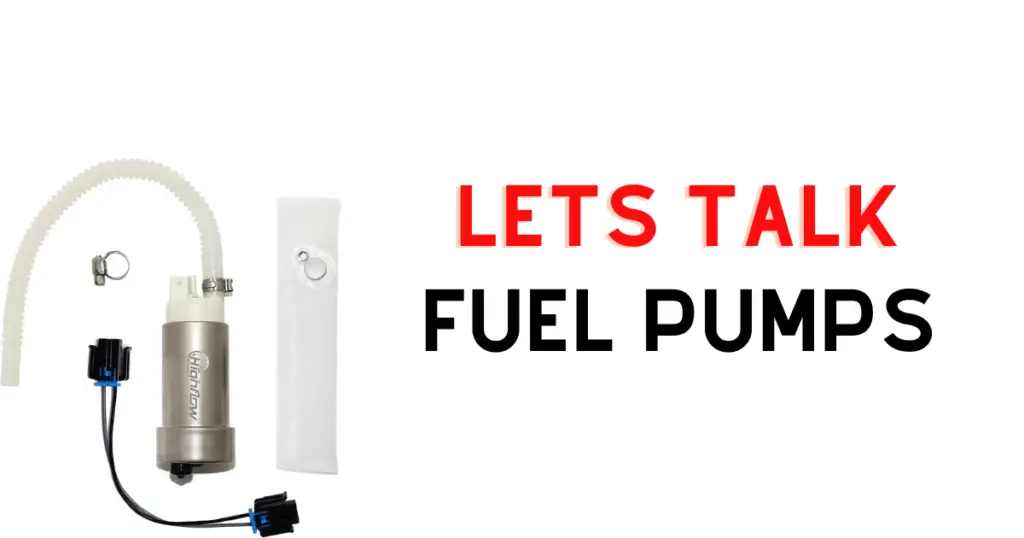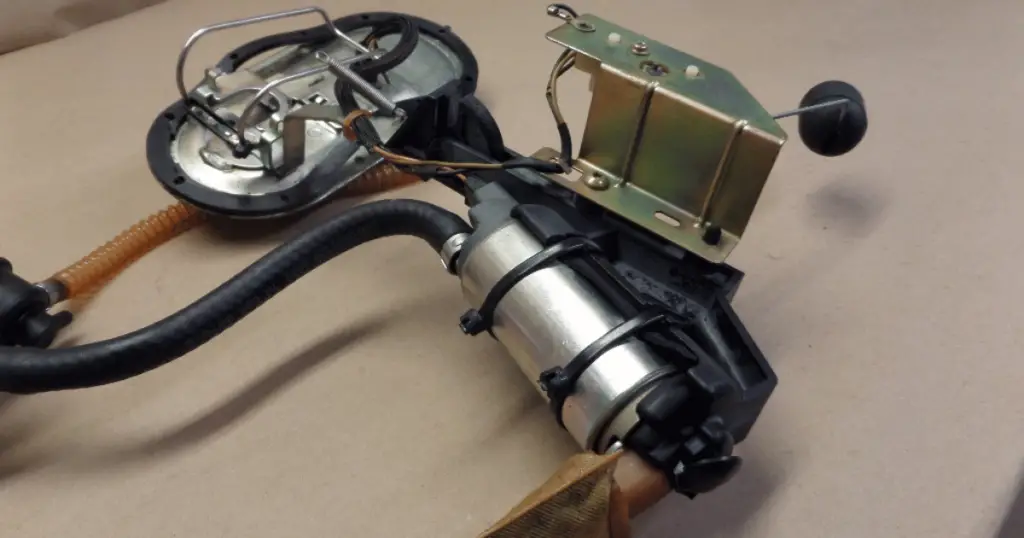Riding a Harley Davidson is an experience filled with the joy of cruising and the rumble of a powerful engine beneath you. But like any mechanical marvel, your Harley is not immune to the issues that can sideline your ride. One such problem that can disrupt your journey is fuel pump issues. Your bike’s heart, the fuel pump, is critical as it supplies the engine with fuel at the right pressure to keep it running smoothly. And unfortunately, Harley Davidson fuel pump problems are not so uncommon.
If you’re facing trouble with your Harley’s fuel pump, symptoms can range from your bike not starting, sputtering, or even stalling while you’re out on a ride. Several factors might be at play behind these symptoms, such as a blown fuse, a malfunctioning fuel pump relay, or a deteriorating fuel pump motor. These components are essential in delivering the necessary fuel to your engine, and any disruption in this process can lead to performance issues or a complete standstill.
Dealing with a fuel pump problem can be daunting, but understanding the signs and knowing what to look for can steer you in the right direction. A whining noise from the tank, engine performance issues, or a sudden drop in fuel efficiency are tell-tale signs. By keeping an ear out for these indicators and conducting timely checks on the fuel system, you can maintain the roar and reliability of your Harley Davidson for the long haul.
Understanding Fuel Pump Basics

In your Harley Davidson, the fuel pump is an essential component of the fuel system, playing a critical role in ensuring the engine performs at its peak. It’s important for you to understand the intricacies of the fuel pump assembly and how it affects your engine’s performance.
Components of Fuel Pump Assembly
Your fuel pump assembly consists of several key parts that work together to deliver fuel to the engine:
- Fuel Pump Motor: The heart of the assembly, responsible for pumping fuel.
- Fuel Filter: Removes impurities from fuel to prevent clogging.
- Strainer: Sits at the pump’s inlet, screening out debris.
- Check Valve: Maintains pressure in the fuel system after the engine is turned off.
- Wiring: Ensures electrical connectivity for fuel pump operation.
Each part must function properly to maintain a smooth-running fuel system.
Role of the Fuel Pump in Engine Performance
The fuel pump delivers a consistent supply of fuel from the tank to your engine. A well-functioning fuel pump ensures that your engine receives the correct amount of fuel at the right pressure, crucial for optimal combustion and performance. Any disruption in the fuel pump’s operation can lead directly to engine problems such as poor acceleration, stalling, or difficulty starting your motorcycle. Therefore, maintaining the health of your fuel pump is tantamount to preserving the performance and reliability of your Harley Davidson’s engine.
Common Symptoms of Harley Davidson Fuel Pump Problems

If your Harley Davidson is experiencing fuel pump problems, you’re likely to notice a few specific issues. Recognizing these symptoms can help you identify and address fuel pump concerns early.
Difficulty Starting and Stalling
When your fuel pump struggles, starting your bike can be a challenge. You may find that your Harley takes longer to start or refuses to start altogether. Stalling may occur at low speeds or when you try to take off from a stop, indicating that not enough fuel is reaching the engine.
Surging and Rough Idle
A faulty fuel pump may cause your engine to surge, which means it unexpectedly accelerates for brief periods without you touching the throttle. Surging often pairs with a rough idle, where your bike might shake or feel unstable when the engine runs at lower RPMs, suggesting inconsistent fuel delivery.
Reduced Fuel Efficiency
Keep an eye on your fuel consumption. If you notice that you’re filling up the tank more often despite your riding habits staying the same, it could signal that the fuel pump is not efficiently delivering fuel, forcing the engine to work harder and thus use more fuel.
Sputtering on Acceleration
A telling sign of a fuel pump issue is sputtering when you accelerate. If you experience a momentary loss of power during acceleration, it can mean that the fuel pump cannot supply enough fuel to the engine, causing it to sputter or jerk.
Diagnosing Fuel Pump Problems
When you’re experiencing issues with your motorcycle’s fuel system, accurately diagnosing the fuel pump is critical. Using specialized tools like a fuel pressure gauge and a multimeter can help you pinpoint the problem. A thorough inspection of all related components is also essential to rule out any contributing factors.
Using a Fuel Pressure Gauge
To begin diagnosing with a fuel pressure gauge, locate your Harley’s fuel pressure test port and attach the gauge. Turn on your ignition and monitor the pressure level; it should hold steady at the specification listed in your service manual. If the pressure reads too low or fluctuates, your fuel pump may be underperforming or failing.
Electrical Testing with Multimeter
For electrical testing, a multimeter is your go-to tool. Check for proper voltage at the fuel pump’s power connector by setting your multimeter to volts DC. If your reading is significantly lower than your battery’s voltage, it could indicate an issue with the pump’s electrical feed, such as a faulty relay or a blown fuse.
Inspection of Related Components
Don’t forget to examine related components during your fuel pump inspection. Check the fuel lines for kinks or damage and ensure the fuel filter isn’t clogged. Additionally, verify that the check valve is operational. Any issues with these components can mimic or exacerbate fuel pump problems.
content continues below
Quick Navigation for Related Problems
-
Harley Davidson Oil Leaks: Quick Fixes for a Sealed Ride
-
Harley Davidson Excessive Vibration: Tips to Smooth It Out
-
Harley Engine Knocking Sound: Causes and Fixes
-
4 Most Annoying Harley Davidson Throttle by Wire Problems
-
5 Harley Davidson Overheating Problems That Ruin Your Ride
-
3 Harley Davidson Brake Light Switch Problems To Be Aware Of
-
Total Harley Davidson Starter Problems Troubleshooting Guide
-
Harley Davidson Speedometer Not Working: Tips, Tricks & More
-
Harley Oil Breather Problems: Quick Tips, Tricks & More
-
Harley Oil Sumping Fix: Quick Solutions for a Smooth Ride
-
Harley Davidson ABS Light Flashing: Tips, Fixes, and More
-
Harley Davidson BCM Problems: Navigating Common Issues
-
Is Your Harley Clicking When Trying to Start? Help’s Here!
-
Harley Davidson Fuel Pump Problems: Tips, Tricks & More
-
3 Harley Davidson Fuel Injection Problems To Be Wary Of
-
Harley Bad Compensator Symptoms: Recognizing Early Signs
-
6 Reasons Why Your Harley Has Power but Won’t Start
-
Your Harley Lost All Electrical Power? Here’s What To Do
-
3 Harley Davidson Transmission Problems That Shift Your Mood
-
4 Harley Hydraulic Clutch Problems, Their Causes and Fixes
content resumes
How To Troubleshoot Specific Fuel Pump Issues
When you encounter a problem with your Harley Davidson fuel pump, accurately diagnosing the issue is key to a successful repair. Here’s how to approach specific fuel pump issues you might be facing.
Fuel Pump Not Coming On
Symptoms:
- You turn the ignition key, but the pump doesn’t make its usual whirring sound.
- Your motorcycle fails to start due to lack of fuel pressure.
Checks:
- Fuse: Ensure the fuse related to the fuel pump is intact.
- Relay: Test the fuel pump relay for proper operation.
- Power: Use a multimeter to check for power at the pump when the ignition is on.
Poor Engine Performance and Power Loss
Symptoms:
- The motorcycle feels sluggish, lacking its usual responsiveness.
- There’s a noticeable decline in acceleration and overall power.
Potential Causes:
- Clogged Filter: A dirty fuel filter can restrict flow, needing replacement.
- Fuel Pressure: Conduct a fuel pressure test to see if the pump delivers the required pressure for optimal engine performance.
Engine Stalling and Random Stalling
Symptoms:
- Your Harley Davidson unexpectedly turns off, especially under load.
- The engine might stall randomly, creating potentially dangerous riding conditions.
Diagnostic Steps:
- Check Fuel Supply: Inconsistent fuel delivery could be the culprit, inspect for any irregularities.
- Wiring Inspection: Inspect the fuel pump wiring for any wear or disconnections that could interrupt power.
Remember, if you’re not comfortable performing these checks yourself, it’s always a wise decision to consult with a professional mechanic.
Maintenance and Preventive Measures To Prevent Fuel-Related Issues
To keep your Harley Davidson motorcycle running smoothly, it’s essential to stay proactive about maintenance, particularly with the fuel system. By keeping up with regular servicing and ensuring the cleanliness of key components, you can prevent common fuel injection problems.
Regular Fuel System Service
Check Your Service Manual: Your first step should always be to consult your Harley Davidson service manual. Typically, it recommends service intervals at 1,000, 10,000, and 20,000 miles for various checks and replacements. This includes inspecting fuel lines and connections for any signs of wear or damage.
Fuel Injection System: Keeping an eye on your bike’s fuel injection system is crucial. If you’re experiencing reduced fuel efficiency or power, the fuel pump could be the culprit. Ensure you’re adhering to the prescribed service intervals to keep the fuel injection system in prime condition.
Cleaning and Replacing Fuel Filter
Cleaning the Fuel Filter: Regular inspection and cleaning of the fuel filter are vital. A clogged filter can lead to reduced engine performance or even stalling. You should:
- Inspect: Every service interval as prescribed by your bike’s manual.
- Clean: If there’s noticeable residue or clogging, cleaning it can restore fuel flow efficiency.
Replacing the Fuel Filter: If cleaning isn’t enough, replacement might be necessary. This is a straightforward process:
- Disconnect the battery.
- Remove the fuel pump from the tank, as directed by your service manual.
- Replace the fuel filter and strainer if there’s visible damage or wear.
By following these maintenance and preventive measures, you’re taking vital steps to ensure your motorcycle continues to operate at its best performance level.
Frequently Asked Questions
In this section, you’ll find answers to common queries about issues with the fuel pump on your Harley Davidson motorcycle, helping you identify, troubleshoot, and understand the causes of fuel pump failures.
What signs indicate a failing fuel pump on a Harley Davidson?
If your Harley exhibits reduced engine power, engine sputtering or stalling, difficulty starting, or an unusual whining noise from the fuel tank, these could be signs of a failing fuel pump.
How can I troubleshoot a fuel pump that isn’t making any noise?
Start by checking the ignition switch and ensuring that the battery is fully charged. If the pump is silent, it may not be pressurizing the fuel lines. Inspect electrical connections and fuses, and refer to your service manual for specific troubleshooting steps.
What could be the primary reasons for fuel pump failures in Harley Davidsons?
Fuel pump failures can be attributed to a failing pump motor, clogged fuel filters, check valve issues, or problems with the electrical connections that power the pump.
How does one test a Harley Davidson fuel pump to determine if it’s functioning properly?
To test a fuel pump, ensure your motorcycle’s battery is connected and charged. Then, try to start the bike and listen for the pump’s operation noise. A pressure test can also be conducted using a fuel pressure gauge.
What are common issues with fuel pumps in Harley Davidson models from the 2010s?
Common fuel pump issues in 2010s Harley Davidson models include the high-pitched whining noise mentioned earlier, as well as difficulties with starting your motorcycle or poor engine performance due to reduced fuel flow.
What do clogged fuel filter symptoms look like in a Harley Davidson?
Symptoms of a clogged fuel filter in a Harley Davidson resemble those of a failing fuel pump, including engine sputtering, loss of power, and stalls during operation. The bike might also have trouble starting, if it starts at all.






Leave a Reply
You must be logged in to post a comment.